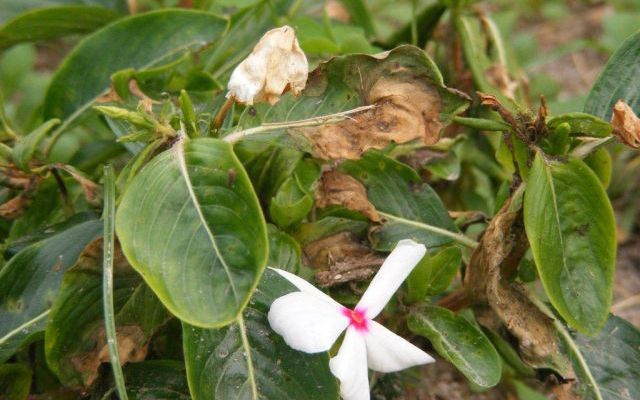Fungi enjoy this summer weather
Published 12:00 am Friday, June 20, 2014
SALISBURY — Hot weather has arrived and with its blunt heat, many home gardeners are phoning and sending e-mails with questions about home gardens and landscapes. Plant growth has accelerated for most plants with the warm weather and recent rains. Unfortunately, the favorable environment often creates other plant related problems. Below are a few situations that you may have encountered.
Question: My lawn was absolutely perfect a few weeks ago. Now I have patches of dead brown areas showing up in sections in my lawn. What is this and is there anything I can do to eliminate the problem?
Answer: Your problem sounds like brown patch. It’s a fungal disease that attacks fescue generally in warm, humid weather as we’ve experienced over the past few weeks. There are preventative fungicides that will keep the fungus under control and reduce the spread of the disease, but you must apply fungicides to the entire lawn on a regular basis for adequate control. The fungicide will not cure what is already affected. Controlling brown patch in fescue lawns is difficult once it becomes established. Go to http://turffiles.ncsu.edu/Alerts.aspx#005597 for more detailed information on brown patch in cool season fescue.
Question: I went by the Cooperative Extension Office on Old Concord Road yesterday and I noticed there were crape myrtles on the side of the building in full bloom. They are very beautiful, yet they are planted very close to the building. Did you have to cut them back to keep them small and also help make them bloom so profusely?
Answer: No, the crape myrtles planted on the side of the building are actually test shrubs donated by Southern Living Nurseries. These are very dwarf crape myrtle varieties that remain very low growing that can also withstand full sun in very hot locations. The benefit of these crape myrtles is that these plants are very dwarf and never have to be pruned to control their height. There are now many dwarf type crape myrtle cultivars available that require very little or no pruning. Go to http://www.ces.ncsu.edu/depts/hort/consumer/quickref/trees/crapemyrtles.html for a partial list of crape myrtle cultivars for your consideration.
Question: We have a beautiful bed of white vincas and they have started dying. This has happened before in other locations in the yard the last two summers. The disease eventually spreads to all plants within the beds and wipes them out. Do you know what this is and how to control it?
Answer: The problem is most likely a fungus. Alternaria sp. is similar to early blight on tomatoes and may be the culprit. Many fungal diseases cause spots on foliage, stems and petioles. Avoid overhead irrigation whenever possible or water early in the morning so the plants have plenty of time to dry before evening. Remove infected plants immediately to minimize disease spread. There are fungicides on available that will help minimize spread of many types of fungi. Go to http://www.clemson.edu/extension/hgic/pests/plant_pests/flowers/hgic2108.html for detailed information on vinca disease control.
Darrell Blackwelder is the county Extension director with horticulture responsibilities with the North Carolina Cooperative Extension Service in Rowan County.





